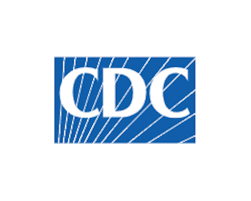It was relatively quiet at the Arizona Capitol last week. Each chamber began the process of hearing the opposite chamber’s bills, Senate bills in House committees, and vice versa. AzPHA supported bill SB1272 which extends AHCCCS coverage to 12 months postpartum from its current 60 days, advanced out of the House Health Committee Monday. Like other bills that contain an appropriation, passing out of both chambers is just the first step in the process.
The next major session deadline is for those crossover bills to be heard in committee in the opposite chamber is Friday, March 25.
Last week’s Legislative Session highlight (from the point of view of good things) was the passage of HB 2157, which will significantly improve access to and the quality of home and community-based services for persons with disabilities. The American Rescue Plan Act provided Arizona up to $1.5B to enhance and improve community-based services for members of AHCCCS’ Long Term Care program (ALTCS).
AHCCCS had earlier developed their action plan to leverage those additional federal funds and CMS approved their plan back in January, but in AHCCCS needed legislative approval in order to implement the plan. Not that HB2157 has been passed and signed, they can begin implementation (once the statute kicks in).
Here’s a link to AHCCCS’ implementation plan which is of course written in dense AHCCCS/CMS language – but the takeaway is that they would bump up the per member per month capitation rates by 10% and then have some performance expectations tied to those funds in areas like:
- Promoting stabilization, access to supportive services, and workforce retention/ consistency to improve member outcomes ($1B)
- Expanding access to care from a “well-trained, highly-skilled workforce” ($217M)
- Supporting individual self-sufficiency by connecting members to technological tools and resources that promote independence ($96M)
- Using new technology to promote care coordination and seamless communication ($74M)
- Funding local initiatives and community-specific programming to improve member health ($62M)
- Empowering parents and families to provide care and meet the needs of their kids ($27M)
- Assessing member engagement and satisfaction to better understand needs, prevent abuse and neglect, and identify opportunities for improvement ($5M)
- Creating tools that strengthen quality monitoring and prevent abuse and neglect ($3.2M)
Bill Overview: Select Bills Progressing that AzPHA is Supporting
HB2157 supplemental appropriations; community-based services SIGNED
SB1272 AHCCCS; postpartum care; eligibility; Passed Senate 26-2
HB2144 health insurance coverage; biomarker testing Passed House 59-0
HB2060 supplemental nutrition assistance program; Passed House 44-15
HB2484 forcible entry; detainer; filing fee Passed House 59-0
HB2485 eviction dismissal; sealed records Passed House 50-8
HB2113 developmental disabilities; Down syndrome Passed House 59-0
HB2382 appropriations, health programs, disabilities Passed House 48-11
HB2033 juvenile offenders; monetary sanctions; repeal Passed House 58-1
HB2811 unlawful abortion medication; offense Failed House 28-31
SB1716 state hospital; governing board; governance Passed Senate 27-0
HB2111 appropriation; healthy families program – Passed house 40-17
Bill Overview: Select Bills Progressing that AzPHA Is Opposing
HB2086 ADHS; school immunizations; exclusions Passed House 31-28
SB1298 government mask mandate; prohibition Passed Senate 16-12
HB2125 electronic smoking devices; retail licensing – failed but on reconsideration for vote in 2 weeks
Senate Health Wednesday
HB2086 ADHS; school immunizations; exclusions OPPOSE
HB2622 AHCCCS eligibility, DCS – SUPPORT
Requires AHCCCS or its designee, subject to the approval of the Centers for Medicare and Medicaid Services, to annually renew the eligibility of a person under 26 years of age and who was in the custody of DCS when the person turned 18 without requiring additional information from the person until they turn 26 years old.
House Health Monday
SB1231 independent oversight committee; developmental disabilities SUPPORT
Directs DDD to allow the Committee up to 30 days to review new policies and major policy changes before DDD submits the policies or changes for public comment.


